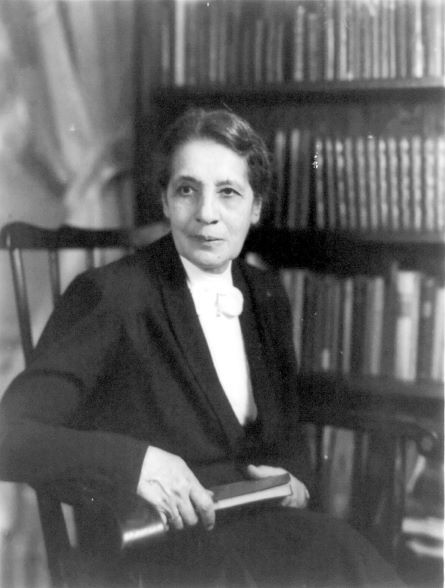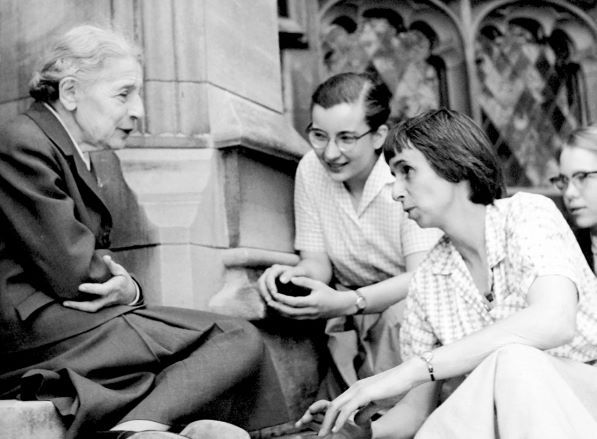How Lise Meitner discovered nuclear fission in secret
Austrian-Swedish physicist Lise Meitner discovered protactinium and nuclear fission. In 1917, she discovered protactinium-231 at the Kaiser Wilhelm Institute.

Otto Hahn won the Nobel Prize in Chemistry for his description of nuclear fission in a paper that came out in 1939, just six days after he had written it. This scientist and Fritz Strassmann wrote the paper, but Lise Meitner was not one of them, even though they both wrote about this physicochemical process. In those tumultuous times, right before the Second World War, it was dangerous to show affection for a person of Jewish background.
Albert Einstein called Meitner "the [Marie] Curie of the German-speaking world". Nine months before the article that would win the prize, Meitner lost her Austrian citizenship because her home country was taken over by Nazi Germany. If all the political events that have happened since 1933, when Adolf Hitler became chancellor of Germany, didn't change the fact that she had to leave, then the annexation did.
Lise Meitner and A Life-Changing Partner
In 1906, Lise moved to Berlin from Vienna. She was 28 years old and the second Austrian woman to get a doctorate in physics. In the German capital, Berlin, she tried to join a lab. This is how she met Otto Hahn, a chemist who was looking for a physicist to study radioactivity with him. The things about Lise made her the perfect partner.
Meitner grew up in Austria, where women were not allowed to go to college. This changed in 1897, five years after Meitner finished her last school year at age 14. At age 21, she started taking private lessons that let her finish high school in two years instead of the eight years that were required. Lise was able to get into the University of Vienna at the end of 1901 because of this. Like Hahn, she was told to try her luck in the field of radioactivity, where she chose to study alpha particles as her first model.

In Berlin, Meitner lived off her father's money because she didn't have a job or a scholarship. She was in a country that was worse for women's academic growth than Austria because women were still not allowed to go to college there. She asked physicist Max Planck to come to her classes at Friedrich Wilhelm University. Even though the scientist was against women going to college, he agreed.
Because of the academic dynamics, Lise went to school with Hahn, a young man her age. He had also worked with a woman before, so he wasn't afraid to talk about gender. Meitner and Hahn got along right away because of this, and it was the start of a long and successful academic career that would last about thirty years and let her call Hahn her "colleague-brother" and best friend. Lise was even Otto's only child's godmother.
Meitner and Hahn and the History of Radioactivity
Both of them had a hard time in the beginning. They were given the basement of the Institute of Chemistry building to start their lab, but they didn't get paid. Hahn was also living off of his father's money. Since women were not allowed at the academy, Lise had to enter her new lab through an outside door and use the bathroom at a restaurant on the same street.
Meitner and Hahn became known as experts on radioactivity in the scientific community of the time. This group included scientists like Enrico Fermi, who made radioactive isotopes, Irène Curie, the first child of Marie and Pierre Curie, and Frédéric Joliot, Irène's husband, with whom she shared the 1935 Nobel Prize in Chemistry for their work on making new radioactive elements. When these were added to the periodic table, scientists worked to find the missing element between thorium and uranium. In 1918, they said they had found protactinium.
Otto was the first of the two to become a professor. Lise was a "guest" until 1913 when she became a paid professor. Four years later, she got her own lab space, and in 1919, she was given the title of professor. Lise was able to make a name for herself. She put out 56 scientific papers between 1921 and 1934.
During this time, Meitner switched from studying radioactivity to studying nuclear physics. Her main goal was to figure out how things like gamma ray absorption and radioactive decay work. When the neutron was discovered in 1932, she measured its mass and was the first to show that a pair of electrons and positrons can live together.
She was also the first to find positrons coming from something other than space. She rubbed shoulders with personalities such as Einstein, Gustav Hertz, Niels Bohr, Erwin Schrödinger, and James Chadwick. But when the Nazis took power at the start of 1933, many of her colleagues chose to leave the country.

Lise's Journey from the East German Border to Sweden
Lise chose to stay in Berlin for many reasons, including the fact that she became an Austrian and a Protestant in her 30s. But staying in that city to work was a choice she came to regret many years later. Even though her life and work are important, the story of how she escaped should be told on its own. She ran away on July 13, 1938, with ten marks (German money unit)and a few changes of clothes. Two physicists, Dirk Coster and Adriaan Fokker helped her cross illegally from Germany to the Netherlands. A few weeks later, with Bohr's help, she was able to get to Stockholm.
But things were not so good for her in Sweden. As a Jewish refugee, Lise had to deal with the racism of the time. She also found a place to work in Manne Siegbahn's lab, but she didn't have any partners, working tools, or technical help. She didn't even have her key to get in, let alone the tools to set up her lab. Some people even think that Siegbahn was one of the people who tried to stop Lise from getting the Nobel Prize.
Still, Meitner wrote to Hahn and Strassmann to continue the work she had to leave behind when she went into exile, but letters weren't enough to coordinate. Hahn went to Copenhagen in secret on November 13, 1938, to meet Lise. He wanted her to look over the data from his research on the element radium and give him guidelines for the work. Once they knew what to do, Otto and Fritz did the experiments that helped them figure out what barium was.
Hahn then wrote to Lise and asked her to come up with a "fantastic explanation" for why they got this element instead of radium. She and the physicist Otto Robert Frisch, whom she thought of as her favorite nephew, came up with a theory to explain how the uranium nucleus splits in two. They called this "nuclear fission".
The Nuclear Fission Problem and Otto Hahn
Otto and Fritz told people about their results on January 6, 1939. A month later, on February 11, 1939, Lise and Frisch published an article in Nature in which they named and explained nuclear fission. Otto asked for their studies to be released separately because he didn't want to be linked to a Jewish woman who was living in exile.
Lise's isolation and independent publication of the papers also led to the breakup of the Meitner-Hahn duo. A skillful move that resulted in the Nazi regime becoming interested in the use of nuclear fission for weapons creation, which financially supported Otto Hahn during the war. In contrast, she always refused to work on the development of nuclear weaponry.
The most valuable fruit of eclipsing Lise came in 1944 when the Nobel committee recognized only Hahn in the category of chemistry. Two years later he collected his prize, with little mention of his co-worker, whom he considered his subordinate collaborator. Although there is evidence that she was nominated several times for the Nobel Prize, in her ninety years of life she never received it. It was not until 1966, two years before her death, that the Enrico Fermi Prize jointly recognized Meitner, Hahn, and Strassmann.
Author: Sofía Flores Fuentes, Source: Revista de la Universidad de Mexico




